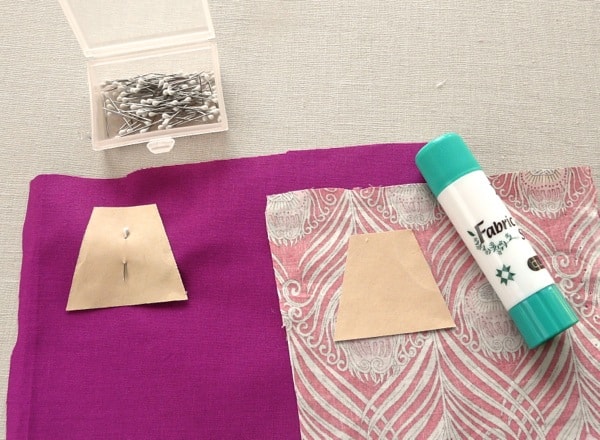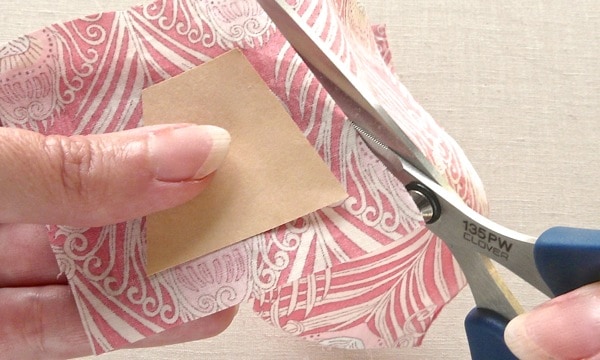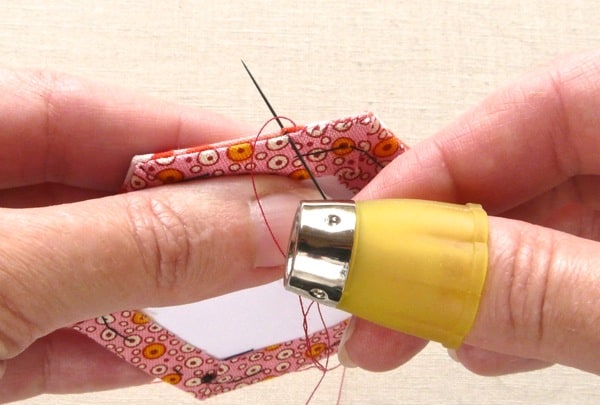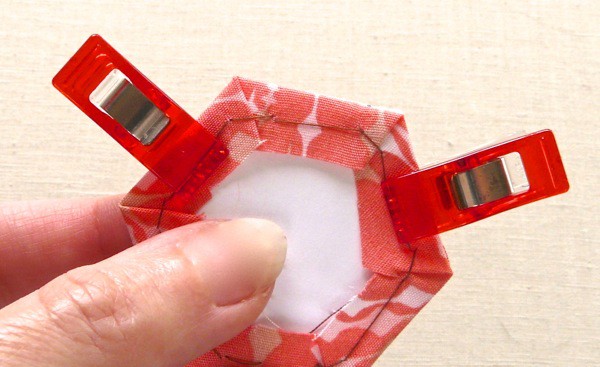A Few of My Favorite Clover Tools for English Paper Piecing
By Diane Gilleland
My new book, All Points Patchwork, is all about English paper piecing (otherwise known as EPP) – a lovely hand-sewn patchwork technique. I’m a big fan of hand-sewing in general, and my toolbox is brimming with Clover! So I thought I’d share some of my favorites, and how they make my EPP easier.
(If you’d like to see some EPP in action, by the way, check out these videos.)
Applique Pins, Fabric Glue Stick
The first step to any EPP project is attaching paper templates to fabric. I use two different tools, depending on the project, Clover’s 3/4″ Applique Pins are a perfect length for pinning smaller patches; when I baste the patches, these short pins don’t prick my fingers. (And since I applique my finished EPP units a lot, the pins do double duty!)
For many straight-sided template shapes, like hexagons, diamonds, triangles, or pentagons, I use Fabric Adhesive Stick instead of pins. A spot of this glue in the center of the template sticks it lightly but firmly to the wrong side of the fabric, and they layers will still be easy to peel apart later.
Patchwork Scissors, Cutwork scissors
Once the paper template is attached to the fabric, the next step of EPP is to cut the fabric a bit larger than the template. Clover’s Patchwork Scissors are by far my favorite for this kind of cutting. They have a very slight serration on their blades, and this makes them “grab” the fabric as they cut. That grab allows for very accurate cutting, especially for the kinds of complex shapes we cut in EPP. I find the Small size’s 3″ blades to be perfect for most projects.
I also keep a pair of Cutwork Scissors on hand for clipping the edges of my curved patches. These sharp-pointed scissors are also wonderful for any fine cutting you might do for applique.
Wonder Clips
With the fabric cut, it’s time to baste the edges around the edges of the template. Make a bunch of these patches, and then it’s time to sew them together.
Like many quilters, I love my Wonder Clips. And I always keep a few in my EPP toolkit as well. The main trick to making nice EPP patchwork is simple: keep your patches lined up accurately as you sew them together. Two Wonder Clips do this job nicely without getting in the way of your needle and thread.
Black Gold Sewing Needles, Needle Threader, Protect & Grip Thimble
Hand sewing may be slow and meditative, but it really uses the muscles in your hands, and here’s where good tools can make a huge difference in the experience!
I love Clover’s Black Gold Needles for hand sewing. They’re very sharp and polished along their length, which allows them to pass so smoothly through fabrics. They won’t bend or break. EPP can be a bit hard on needles – you’re passing them repeatedly through the edges of your patches, bumping into the edges of those paper templates along the way. I find that my Black Gold needles retain their sharpness much longer than other brands.
I prefer a size 10 Applique/Sharp needle, but recommend getting an assorted pack of sizes 9-12 so you can see what your hands like best. The eyes of these needles are quite small, which is exactly what you want for making tiny stitches. If you find them challenging to thread, just pick up one of Clover’s excellent needle threaders, like the Quilting Needle Threader or the Desk Needle Threader.
Everyone’s hands are unique, which is one of the fun things about hand-sewing; each of us does it a little differently. Some stitchers like to use a thimble, and I love my Protect and Grip Thimble. I wear a large size on my thumb for EPP, but you might like a smaller one on a different finger. Try sewing for a while and see where your hands could use some support, and then use the handy size guide on the package. The stretchy sides of this thimble conform to your finger while providing a little extra grip on your needle. And the metal tip is great for pushing the needle through tight spaces – especially when you’re stitching at the ends of the patches, where there are more layers of fabric to pass through.
What are your favorite hand-sewing tools? Please share in the comments below!



